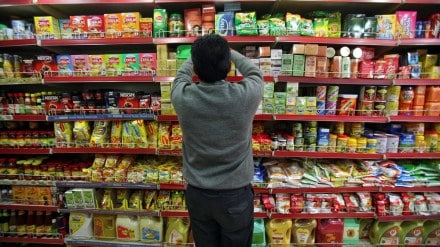The country’s Rs 5-trillion fast-moving consumer goods (FMCG) market may have to take sharper price cuts to shore up volume growth amid rising local competition and sluggish rural demand.
Over the last couple of quarters in FY24, FMCG companies have already cut product prices by 3-11% as commodity inflation began easing. Price cuts were taken in soaps, detergents, hair oils, biscuits and shampoos to aid volume growth.
But, with the resurgence of local and regional brands over the last two quarters, the pressure to cut prices further and stay competitive is only growing, say experts.
Data from market research company Kantar Worldpanel for the July-September 2023 period shows that the penetration of local brands has grown between 4% and 31% in categories such as detergent bars, washing powder, biscuits and soaps versus 2-10% growth seen by larger players within households in the quarter under review.
Tea, on the other hand, has seen the market value of small players grow 1.4 times versus large players in the September quarter, the country’s largest consumer goods company Hindustan Unilever (HUL) said. In the case of detergents, the market value had grown six times that of large players, HUL’s CEO & MD Rohit Jawa said.
“This is a difficult situation for FMCG companies where they have to look at sharper price cuts to encourage rural consumers to come out and buy. Otherwise, price-conscious rural consumers may continue to downtrade and go for cheaper alternatives,” says G Chokkalingam, founder at Mumbai-based Equinomics Research & Advisory.
Rural sales constitute over a third of an FMCG company’s annual sales. NielsenIQ data shows that rural growth while gradually inching up in the last one year continues to lag urban growth by 300 basis points. One basis point is one-hundredth of a percentage point.
At Unilever’s global analysts call last month, CFO Graeme Pitkethly said the company would see deflation in pricing in India, its second-largest market in the world, within skincare and fabric cleansing, in particular, as commodity inflation moderated.
“A couple of our categories in India, fabric cleaning and skin cleansing, are correlated to underlying commodity prices. Local competition has entered the market. We have to adjust pricing therefore in order to maintain competitiveness and our volume position,” Pitkethly said about the market dynamics.
Ritesh Tiwari, HUL’s CFO had indicated during the company’s second-quarter earnings last month that price-led growth would be marginally negative for the firm going forward as commodity inflation continued to moderate.
Varun Berry, chairman and MD, Britannia said in an earnings’ call last week that his firm would cut biscuit prices further, if input costs were favourable.
“Slowdown and demand are something we need to watch out for,” he said, adding that his firm had cut prices of some of its key brands and packet sizes in the September quarter to drive sales and recover market share from local players. Price cuts by Britannia, according to analysts, was to the tune of 1.5% in the September quarter.
While the price of milk has fallen by 9.8% in the last one month, the sugar price drop has been marginal at 0.38% and barley prices have firmed up by 2.75% in the same period, Bloomberg data shows.
The benchmark Brent crude, on the other hand, has fallen by 11% in the last one month. This has, in turn, impacted crude-linked derivatives such as linear alkyl benzene (LAB), titanium dioxide and soda ash, which have come off by 1-23% in the last one month, according to Bloomberg data.
LAB is used in making detergents and constitutes almost 60-70% of the latter’s input cost. Soda ash is used in both soaps and detergents. And titanium dioxide goes into paints.
Though palm oil, which is used to make soaps, has seen an increase of about 3% in terms of price in the last one month, year-to-date, the commodity has fallen by 8.18%, according to Bloomberg data.
